Flexor Carpi Radialis Muscle
Table of Contents
Description
The Flexor Carpi Radialis muscle is a long, narrow muscle located in the forearm, on the thumb side. It originates from the medial epicondyle of the humerus and the adjoining ridge of the ulna bone and then travels down the forearm to insert into the base of the second metacarpal bone of the hand.
The main function of the Flexor Carpi Radialis muscle is to flex and abduct the wrist joint, which means that it helps to bend the wrist towards the palm and also move it sideways towards the thumb side. It also helps to stabilize the wrist during gripping and lifting movements.
The Flexor Carpi Radialis muscle is innervated by the median nerve, which also supplies other muscles in the forearm and hand. It is an important muscle for many everyday activities that involve the use of the hand and wrist, such as writing, typing, playing musical instruments, and sports that require gripping and throwing.
Structure of flexor carpi radialis muscle
The Flexor Carpi Radialis muscle is a relatively long and slender muscle located in the anterior compartment of the forearm. It has a distinct origin, belly, and insertion, as follows:
Origin:
- The Flexor Carpi Radialis muscle originates from two separate points on the humerus bone: the medial epicondyle and the common flexor tendon, which attaches to the adjoining ridge of the ulna bone.
Belly:
- The muscle belly of the Flexor Carpi Radialis is long and narrow, and it lies on the radial side of the forearm. It runs obliquely downwards and medially, towards the wrist joint.
Insertion:
- The Flexor Carpi Radialis muscle inserts into the base of the second metacarpal bone of the hand, near the radial styloid process.
- The Flexor Carpi Radialis muscle is covered by a layer of fascia, which helps to keep it in place and protect it from injury.
- It is also surrounded by other muscles, nerves, blood vessels, and tendons, which work together to allow the hand and wrist to move and perform various tasks.
Overall, the structure of the Flexor Carpi Radialis muscle is well-adapted for its primary function of flexing and abducting the wrist joint.
Nerve supply of flexor carpi radialis muscle
- The Flexor Carpi Radialis muscle is innervated by the median nerve, which is a mixed nerve that arises from the brachial plexus in the neck and travels down the arm.
- The median nerve also supplies several other muscles in the forearm and hand, as well as the skin on the palm side of the hand and fingers.
Blood Supply
- The arterial supply of the Flexor Carpi Radialis muscle comes from several branches of the radial artery, which is a major blood vessel that runs down the forearm.
- These branches include the radial recurrent artery and the palmar carpal branch of the radial artery, which provide blood to the muscle and surrounding tissues.
In addition, the Flexor Carpi Radialis muscle may also receive blood supply from branches of the ulnar artery, which is another major artery in the forearm. The arterial supply is important for providing oxygen and nutrients to the muscle tissue, as well as removing waste products and maintaining proper function.
Functions of flexor carpi radialis muscle
The Flexor Carpi Radialis muscle has several important functions related to the movement and stability of the wrist joint. These include:
Wrist flexion:
- The Flexor Carpi Radialis muscle is one of the main flexors of the wrist joint, meaning that it helps to bend the hand towards the palm.
Wrist abduction:
- The Flexor Carpi Radialis muscle also plays a role in abducting the wrist, which means moving it sideways towards the thumb side of the hand.
Grip strength:
- The Flexor Carpi Radialis muscle helps to stabilize the wrist joint during gripping and lifting movements, which can increase grip strength and prevent injury.
Hand and finger dexterity:
- Because the Flexor Carpi Radialis muscle is involved in the wrist and finger movements, it can also contribute to overall hand and finger dexterity, which is important for many everyday activities.
Overall, the Flexor Carpi Radialis muscle is an important muscle for many tasks that require wrist and hand movement, such as typing, writing, playing musical instruments, and sports that involve gripping and throwing.
Clinical Significance
Some conditions that may be associated with Flexor Carpi Radialis muscle injury or disorder include:
Wrist sprain:
- A sprain involves stretching or tearing of ligaments in the wrist joint, which can cause pain, swelling, and stiffness similar to a Flexor Carpi Radialis injury.
Tendinitis or Tenosynovitis:
- Inflammation of the tendons or their protective sheaths in the wrist or forearm can cause pain and swelling, which may be mistaken for a Flexor Carpi Radialis injury.
Carpal Tunnel Syndrome:
- This condition involves compression of the median nerve in the wrist, which can cause pain, numbness, and tingling in the hand and fingers, similar to symptoms of a Flexor Carpi Radialis injury.
Radial Tunnel Syndrome:
- This is a condition where the radial nerve is compressed as it passes through the forearm, causing pain and weakness in the wrist and hand.
Wrist Fractures:
- Fractures of the wrist bones can cause similar symptoms to a Flexor Carpi Radialis injury, such as pain, swelling, and difficulty moving the wrist.
Arthritis:
- Osteoarthritis or rheumatoid arthritis can affect the wrist joint, causing pain, stiffness, and swelling that may be similar to symptoms of a Flexor Carpi Radialis injury.
Peripheral neuropathy:
- This is a condition where the nerves in the hands and feet are damaged, causing symptoms such as pain, numbness, and tingling that may be similar to symptoms of a Flexor Carpi Radialis injury.
To differentiate these conditions from a Flexor Carpi Radialis injury, a healthcare provider may perform a physical examination, imaging tests, and nerve conduction studies to identify the underlying cause of the symptoms.
Exercise of Flexor Carpi Radialis Muscle
Physiotherapy exercises can be helpful in the management of Flexor Carpi Radialis muscle injuries. Some exercises that may be prescribed by a physical therapist include:
Wrist Flexor Stretch:
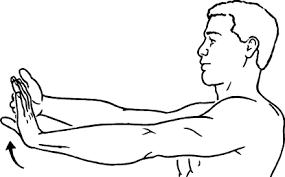
- Sit with the arm extended in front of the body and the palm facing down.
- Use the other hand to gently pull the fingers towards the wrist until a stretch is felt in the forearm.
- Hold for 15-30 seconds and repeat 3-5 times.
Wrist Extension:

- Hold a weight or resistance band in the affected hand and sit with the arm extended in front of the body and the palm facing up.
- Slowly lift the weight or band towards the ceiling, keeping the wrist straight.
- Hold for a few seconds and then lower the weight or band slowly.
- Repeat for 10-15 repetitions.
Grip Strengthening:
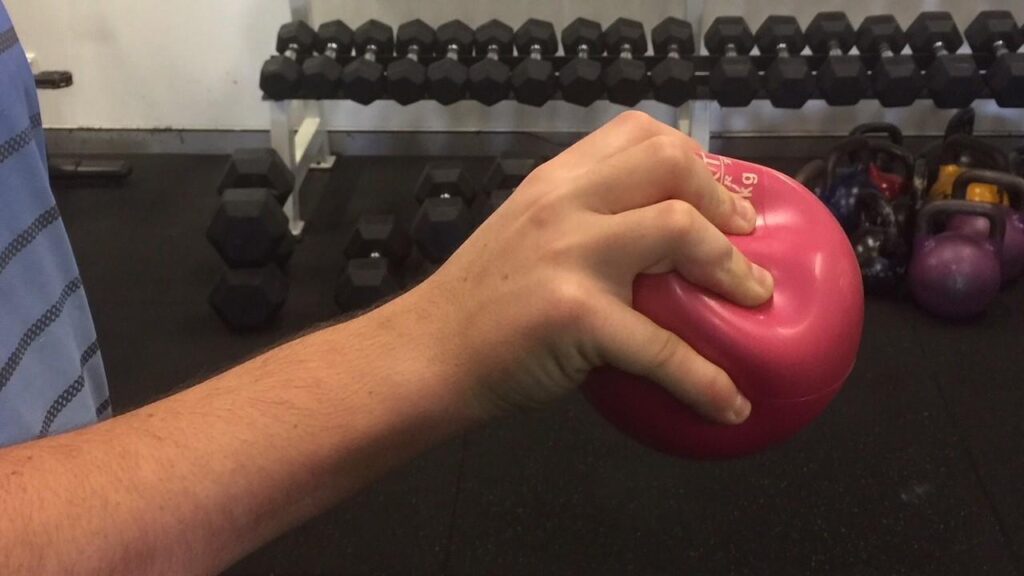
- Hold a soft ball or putty in the affected hand and squeeze it as hard as possible, then release slowly.
- Repeat for 10-15 repetitions.
Pronation and Supination:
- Hold a weight or resistance band in the affected hand and sit with the arm extended in front of the body and the palm facing down.
- Slowly rotate the forearm so that the palm faces up, then rotate back to the starting position. Repeat for 10-15 repetitions.
Ultrasound Therapy:
- A physical therapist may also use ultrasound therapy to promote healing and reduce pain and inflammation in the Flexor Carpi Radialis muscle.
It is important to follow the guidance of a physical therapist and avoid any exercises or activities that cause pain or discomfort in the affected area. Overexertion or incorrect technique during exercise can aggravate the injury and delay healing.
Strengthening exercise
Strengthening exercises can be helpful in rehabilitating the Flexor Carpi Radialis muscle after an injury. Here are a few examples of strengthening exercises that can be prescribed by a physical therapist:
Wrist Flexion:
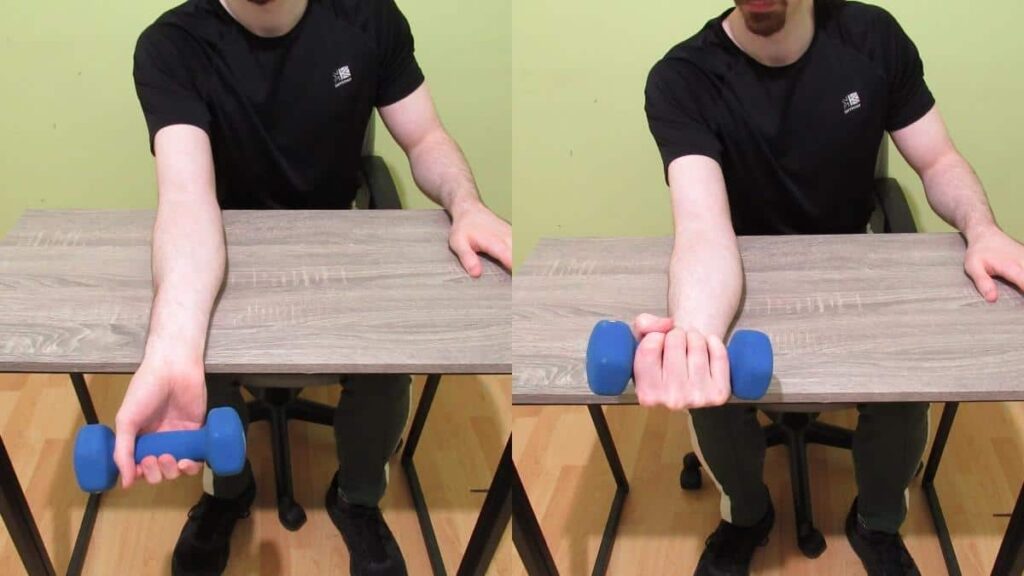
- Hold a weight or resistance band in the affected hand and sit with the arm extended in front of the body and the palm facing up.
- Slowly lift the weight or band towards the shoulder, bending at the wrist. Hold for a few seconds and then lower the weight or band slowly.
- Repeat for 10-15 repetitions.
Reverse Wrist Curls:

- Hold a weight or resistance band in the affected hand and sit with the arm extended in front of the body and the palm facing down.
- Slowly lift the weight or band towards the shoulder, bending the wrist backward.
- Hold for a few seconds and then lower the weight or band slowly.
- Repeat for 10-15 repetitions.
Pronation and Supination with Weight:
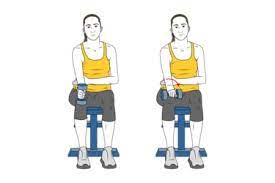
- Hold a weight or resistance band in the affected hand and sit with the arm extended in front of the body and the palm facing down.
- Slowly rotate the forearm so that the palm faces up, then rotate back to the starting position.
- Repeat for 10-15 repetitions.
Wrist Flexor Superset:
- Hold a weight or resistance band in the affected hand and sit with the arm extended in front of the body and the palm facing up.
- Do 10 repetitions of wrist flexion followed immediately by 10 repetitions of reverse wrist curls?
It is important to start with light weights or resistance bands and gradually increase the intensity as strength improves. It is also important to avoid any exercises or activities that cause pain or discomfort in the affected area.
FAQ
A Flexor Carpi Radialis muscle strain can be caused by overuse, repetitive strain, sudden trauma, or improper technique during physical activity.
Yes, you can reduce the risk of a Flexor Carpi Radialis muscle strain by properly warming up before physical activity, using the proper technique during exercises, taking breaks and stretching regularly, and using proper equipment and protective gear.
In most cases, a Flexor Carpi Radialis muscle strain can be fully healed with proper treatment and rehabilitation. However, in severe cases or if left untreated, permanent damage and weakness can occur.
In some cases, a Flexor Carpi Radialis muscle injury can lead to other complications such as carpal tunnel syndrome or chronic pain. It is important to seek medical attention and properly treat the injury to avoid further complications.
The best way to rest a Flexor Carpi Radialis muscle injury is to avoid activities that aggravate the injury and allow the affected area to rest and recover. This may involve immobilizing the wrist with a brace or splint for a period of time.

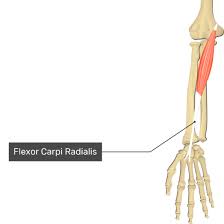
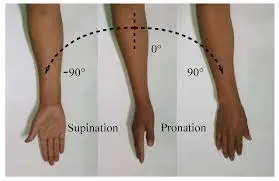
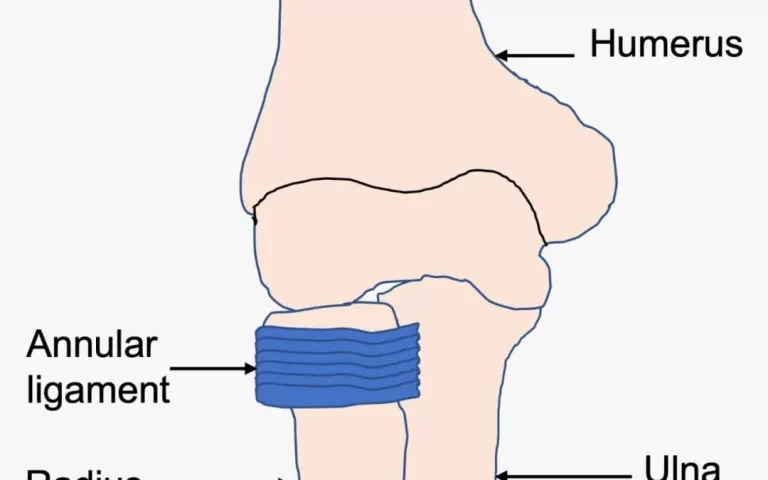
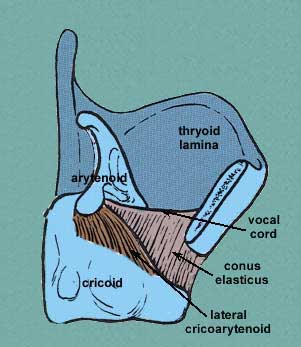
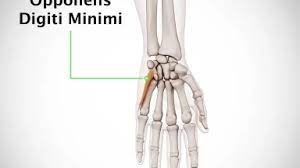

5 Comments